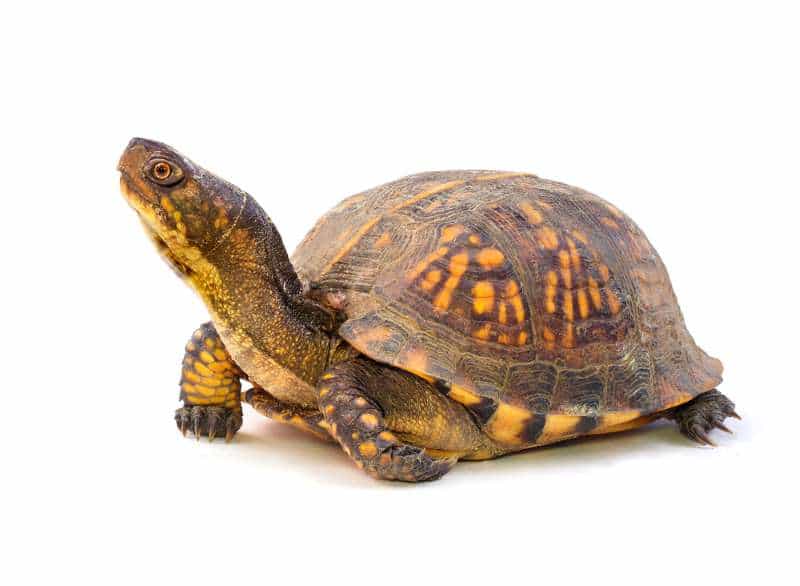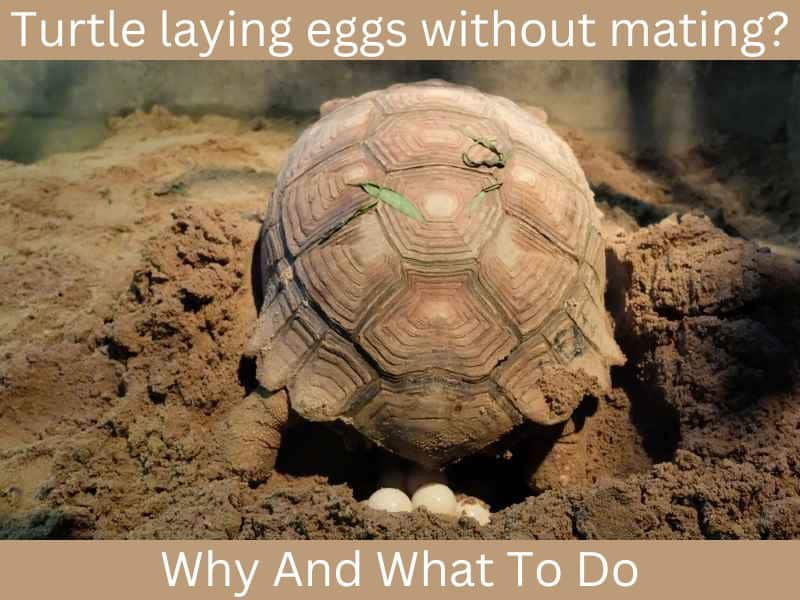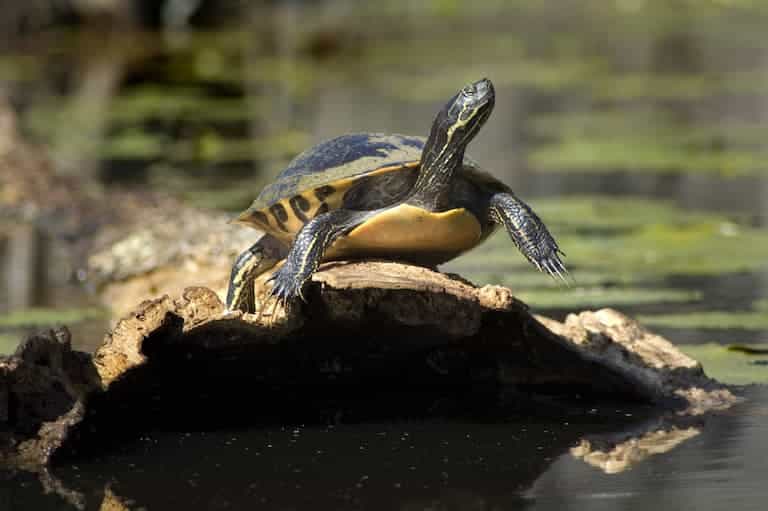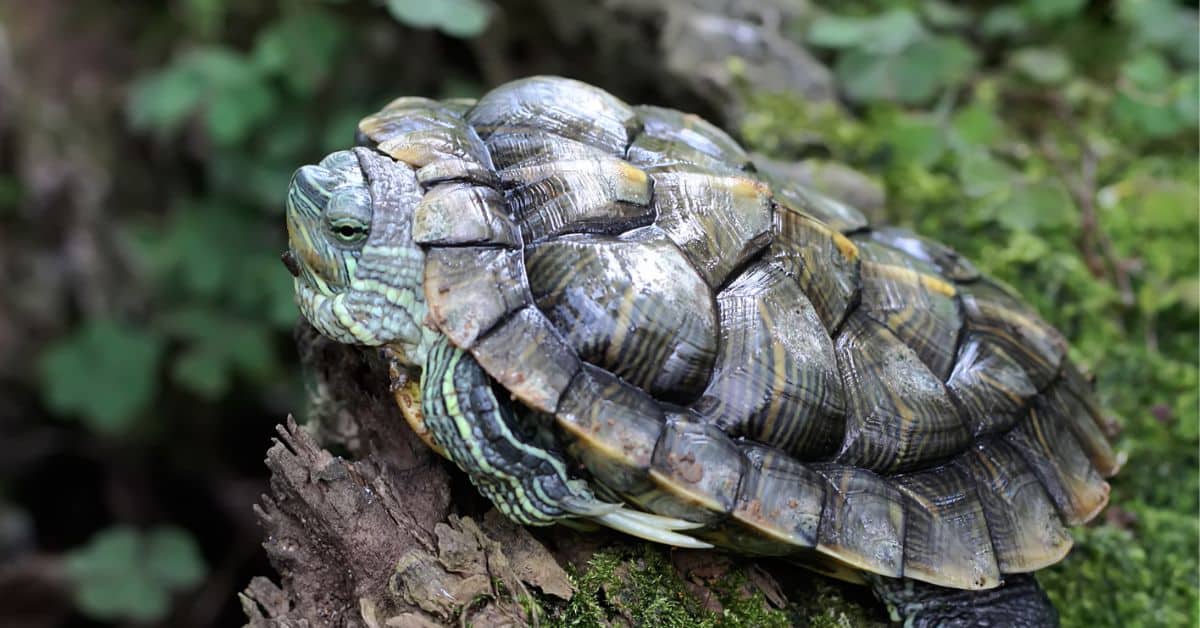Eastern River Cooter vs Yellow-Bellied Slider Turtle: What Is The Difference?

Yellow Bellied Sliders and Cooters are two turtle types that are often misidentified. Both of these turtles have similar shapes, patterns, and color schemes, which makes it easy to confuse the two. Even so, there are some identifying characteristics that can help you tell a Yellow Bellied Slider from a Cooter.
A Yellow Bellied Slider has a yellow patch located behind the head whereas an Eastern River Cooter does not. Also, the shape, size, underbelly patterns, upper jaw, and rear marginals of the turtles are different.
To learn more about how to distinguish a Yellow Bellied Slider from a Cooter, keep reading. This article goes into detail about five different ways you can distinguish between these two turtle species.
Contents
How To Tell A Yellow-Bellied Slider From A Cooter
Even though Yellow Bellied Sliders and Cooters look similar, there are some distinguishing characteristics between these two species. Here are five ways you can tell a Yellow Bellied Slider apart from a Cooter:
Shape and Size
One way you can tell a Yellow Bellied Slider from a Cooter is from the size and shape of the turtle. Yellow Bellied Sliders typically have a very round or dome-shaped shell, whereas Cooters are flatter and lower to the ground. The flatness of the Cooter will depend on the Cooter species, but Cooters are flatter than Yellow Bellied Sliders, in general.
If the turtle is very round and has a dome shell, it is likely a Yellow Bellied Slider. If not, it is likely a Cooter.
Underbelly
Both the Yellow Bellied Slider and the Cooter have primarily yellow underbellies. The patternings are mainly kept on the outer ridges, but the belly itself is free from different patterns and colors, aside from yellow.
That being said, some Cooters have patterns on their yellow bellies. The Eastern River Cooter, for example, has different patterns on its belly. This isn’t the case for all Cooters, but if you find a turtle that looks like a Yellow Bellied Slider but has patterns, it is likely a type of Cooter.
Head Patterns
One of the easiest ways to distinguish a Yellow Bellied Slider from Cooters is through the head patterns. Most notably, Yellow Bellied Sliders have yellow splotches behind the eye. This is the main determiner of a Yellow Belly versus a Cooter. Looking for this patch is the best way to identify Yellow Bellied Sliders.
Meanwhile, Cooters have different patterns. Eastern River Cooters, for example, have thin yellow slivers across their head and no marking above the eyes. The exact patterning on the Cooter will depend on the species, but most are free from the blotch found behind the Yellow Bellied Sliders’ eyes.
Upper Jaw
You can also take a look at the upper jaw to distinguish a Yellow Bellied Slider from a Cooter. Yellow Bellied Sliders typically have an indent on the jaw, whereas Cooters do not.
Rear Marginals
The last way to distinguish the Yellow Bellied Slider from a Cooter is to look at the rear marginals. There will be an indent between each rear marginal on the Yellow Bellied Slider, creating a jagged appearance around the outside of the shell. Although Cooters may have a little bit of indentation, their shell is a lot smoother around the edges.
Final Thoughts
Yellow Bellied Sliders and Cooters are often mistaken because they are similar in size and have yellow patterns and yellow bellies. However, there are ways that you can distinguish a Yellow Bellied Slider from a Cooter. You just have to know where to look.
Most notably, Yellow Bellied Sliders have yellow blotches behind their eyes, whereas Cooters have different patterns on their heads. You can also look at the shape and size of the turtle, as well as the underbelly, upper jaw, and rear marginals to distinguish these two turtle types.
We hope this article has helped you to distinguish a Yellow Bellied Slider from an Eastern River Cooter.




